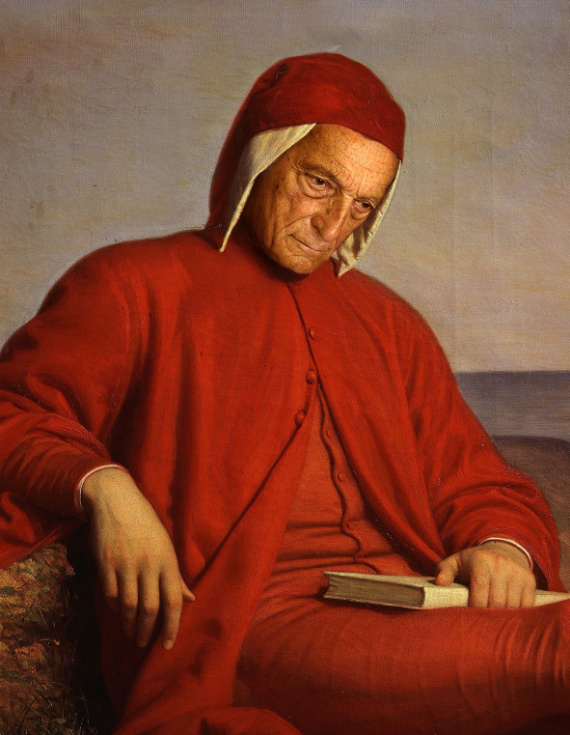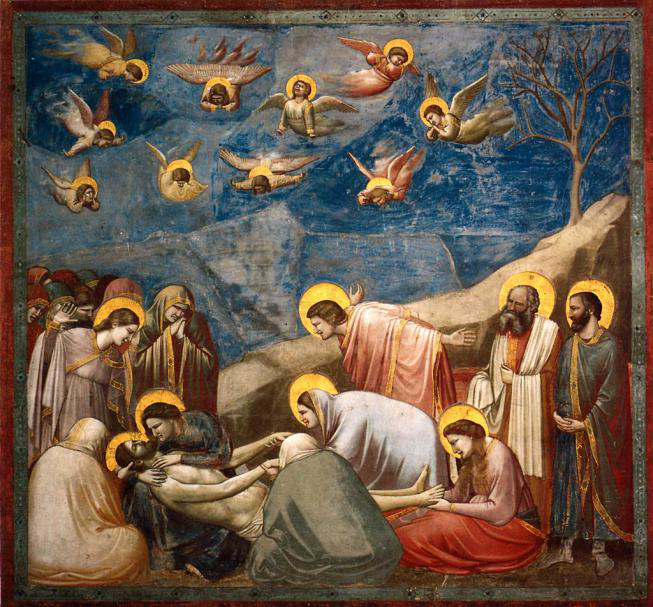Biography
Giotto is an Italian painter, founder of protorenesissa. Originally, he is from Cole da Vespignano in Tuscany. He studied at the Ciampayo workshop (between 1280 and 1290), he worked mainly in Florence (where since 1334 he directed the construction of the Cathedral of Santa Maria del Fiore and the city fortifications) and Parma. At the beginning of the 14th century, Giotto visited Rome. The name of Giotto is connected with a new stage of the development of Italian and European art (Protoranesians), the discontinuance of Italian Florence with medieval artistic canons and the traditions of the so-called Italian-Byzantine art, as well as frescoes.
Giotto is rightly considered to be the father of European painting, the founder of realism. Numerous disciples, followers, and imitators of the renowned master expanded its influence to many cultural centers of Europe.
His biography was commented by Boccaccio, who believed that he “could by right be called one of the lights of Florentine glory.” “The painter is not only wonderful but also beautiful, whose glory is great among the artists,” – Boccaccio said.
Giotto di Bondone was born in Vespignano, near Florence, probably in 1267, and as it’s known, he has died in 1337 at the age of seventy. According to Vasari, Giotto was the son of a farmer. There is one story known about him. Once, glorified painter Cimabue, who was walking along the road from Florence to Vespignano, saw the herds of a boy who drew a sheep on a smooth stone. Chimabye took him to his students, and, after some time, the student surpassed the teacher.
Together with Cimabee, Giotto went to Rome for the first time around 1280 and then visited Assisi. Apparently, at the end of the 80s, a young artist married Jundo di Lapo del Spialla, who had four daughters and four sons.
Giotto had the most average, vague look – “small growth, ugly.” In the stories of that time, Giotto acts as a wise man and a joker.
Painter spent the next years in Assisi, where he participated in the painting style of the Upper Church of San Francesco. His earliest works include some frescoes on the theme of the Old and New Testaments, in the upper zone of the walls of the longitudinal nave. These paintings were made in the first half of the nineties. It’s believed that during that time Giotto traveled to Rome for a while, where he was impressed by the Cavalline’s paintings and early Christian mosaics.
Key Ideas in painting
Giotto di Bondone didn’t understand the laws of the prospect, didn’t study the human anatomy, the figures on its frescoes didn’t correspond to their size landscapes. But the three-dimensional world – voluminous and tangible – is open again, triumphantly approved by the brush of the artist. The symbolism of Byzantine art was rejected. The painter used the simplicity. Nothing superfluous, the attention of the artist in famous paintings is focused on the main and gives a synthesis, a grand generalization.
The acquaintance of Giotto with the late antique artwork and the works of Pietro Cavallini contributed to the development of his creative method, the creation of such an outstanding monument of Protoniansansan painting, like the artwork of the Capella del Arena (Skroveniy) in Padua (1304-1308). The Giotto Frescoes, dedicated to the life of Mary and Christ, located on the walls of three horizontal rows, are distinguished by the dramatic and vital convincing images, the bold construction of space, the almost sculptural mold of plastic volume, the simplicity and at the same time the expressiveness of gestures and angles, bright, festive coloring and unique style.
The work of Giotto was distinguished by the enormous graphics power and dramatic expressiveness of his images. The impact on the viewer was stronger, the more natural and realistic were the artistic techniques of Giotto, who set himself the task of representing a real three-dimensional space constructed on a linear perspective basis.
Without a knowledge of the scientific perspective, it would seem that the means of Giotto, seemingly primitive, had reached the unprecedented effect of the art of his time, one of the first to enter the artwork of the interior. At the same time, Giotto’s second conquest was the creation of plastic, rounded human figure, and each of his depicted figures possessed purely material merit and, by virtue of this profound vitality, realistic conviction.
The most famous paintings of the master are: “Adoration of the Magi”, “Dante Alighieri”, “Madonna in Glory”, “Massacre of the Innocents”, “Nativity: Birth of Jesus”, as well as “The Lamentation” and “The last judgement” you’ll read about below.
Famous Paintings
“The Lamentation”
The frescoes of the Italian painter and architect Giotto marked the birth with the discovery of a completely different page in the narrative of art history. Until the heyday of his work, Italian sculptors followed the rules of medieval and Roman antique drawings traditions.
Giotto’s architecture breaks the connection with the technique of painting the past up to the complete refusal to follow its laws. Florentines believe that the famous master has crossed the threshold in the new era of art.
The general emotional background of the painting “The Lamentation” is the ingenious artistic reception of Giotto. All participants of the event are involved in the occurrence, and the position of their bodies, the details are drawn by the folds of clothing, the ratio of dimming and illuminated areas create an incredibly realistic spatial depth of the artwork.
In the focus of the drawing, there are the reduced faces of the murdered Christ and the Mother. It’s precisely in this center of the greatest emotional stress that all objects and characters of the canvas are comfortably directed. The views of the heavenly and terrestrial participants of the sorrowful scene are visually and mentally immersed in the events.
“The last judgement”
In the center of “The last judgement,” in an oval frame supported by angels, Jesus sits in all his splendor. To the left and to the right sit the apostles, each on a separate throne (the most luxurious throne belongs to the apostle Peter). There are the angels’ arms above them, the slender ranks of the heavenly host.
The most interesting are two separate angelic figures under the very vault. They proclaim the discovery of the New Jerusalem and, as it were, wrap the edges of the canvas or parchment, emphasizing the illusory nature of what is happening. It can be interpreted in two ways. Either all the earthly manifestations are illusory before the higher heavenly reality. Or Giotto alludes to us that everything he wrote on the wall of the Scrovegni Chapel, with all the naturalism, is just art of architecture and Florence.








